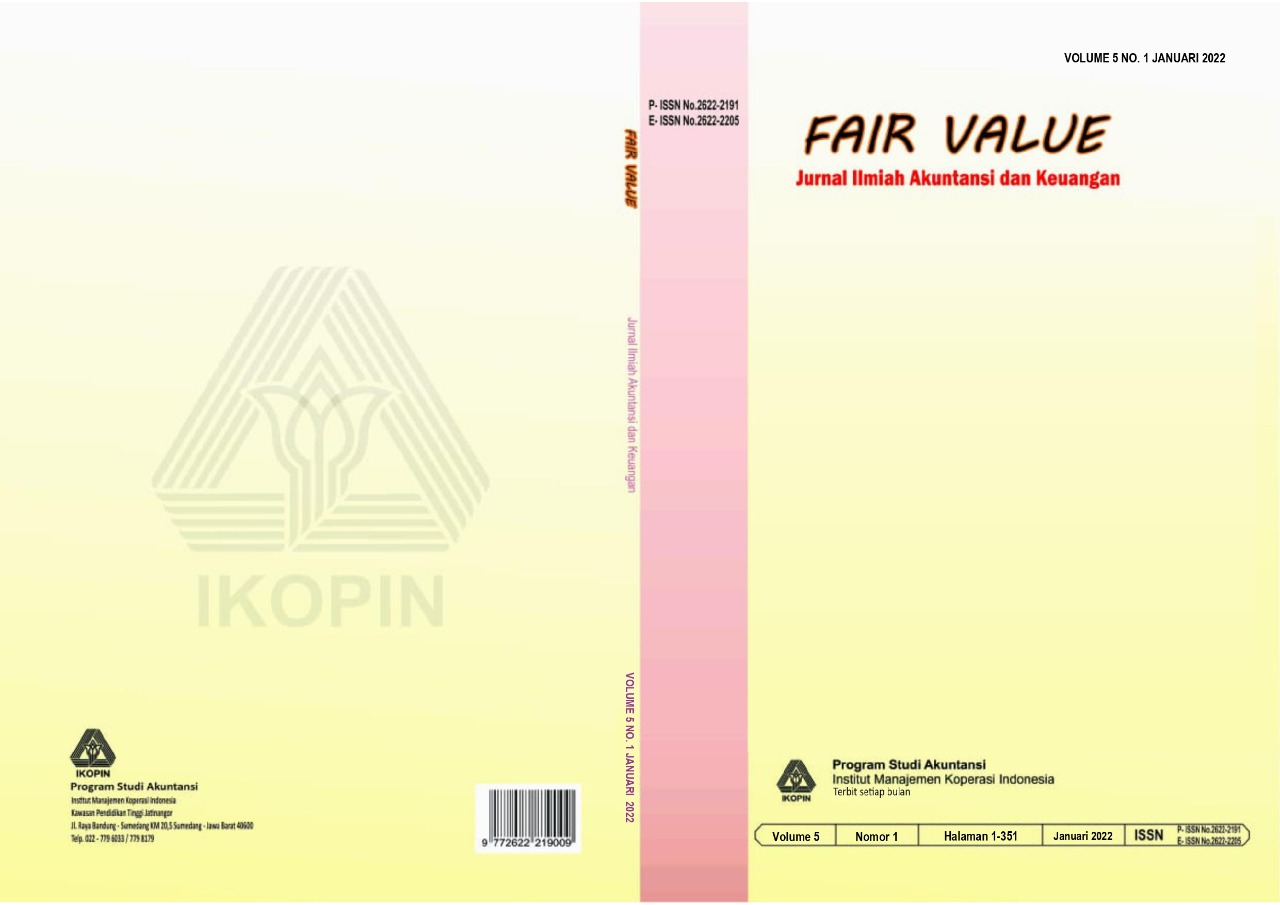Moderation of inflation on the macroeconomic effect on gold futures prices
Main Article Content
Abstract
Investment is a way to be able to live more safely in the future. There are investment instruments, but historically, gold is an investment instrument that is still in demand by investors even though many new investment instruments have emerged, such as crypto. This is because gold is considered a safe investment when the world economy is in a crisis. This study uses a quantitative approach that uses macroeconomic and gold futures monthly data for 2016-2020. Based on the results of the study, it shows that interest rates have a negative influence on gold futures prices, meaning that the lower the interest rate, the higher the gold futures price. Exchange rates show no effect on gold futures prices. Inflation has a negative effect on gold futures prices, meaning that the smaller the inflation, the higher the gold futures prices. Inflation as a moderating variable shows the ability to change and strengthen the effect of interest rates and inflation on gold futures prices. The results of this study indicate the importance of portfolio diversification, because gold futures prices have different characteristics from stock prices.
Article Details
References
Ammous, S. (2018). The bitcoin standard: the decentralized alternative to central banking. John Wiley & Sons.
Apriyanti M. 2012. Anti Rugi dengan Berinvestasi Emas. Jakarta (ID): Pustaka Baru Press.
Ball, R. J. (2017). Inflation and the Theory of Money. Routledge.
Bhunia, A., & Pakira, S. (2014). Investigating the impact of gold price and exchange rates on sensex: an evidence of India. European journal of accounting, finance and business, 2(1), 1-11.
Bin Sukri, M. K. A., & Mohd Zain, N. H. (2015). The relationship between selected macroeconomic factors and gold price in malaysia. International Journal of Business, Economics & Law, 8(1).
Blose, L. E. (2010). Gold prices, cost of carry, and expected inflation. Journal of Economics and Business, 62(1), 35-47.
Bordo, M. D., & Schwartz, A. J. (Eds.). (2009). A retrospective on the classical Gold Standard, 1821-1931. University of Chicago Press.
Bouoiyour, J., Selmi, R., & Wohar, M. E. (2019). Safe havens in the face of Presidential election uncertainty: A comparison between Bitcoin, oil and precious metals. Applied Economics, 51(57), 6076-6088.
Egbunike, C. F., & Okerekeoti, C. U. (2018). Macroeconomic factors, firm characteristics and financial performance: A study of selected quoted manufacturing firms in Nigeria. Asian Journal of Accounting Research.
Emmrich, O., & McGroarty, F. J. (2013). Should gold be included in institutional investment portfolios?. Applied Financial Economics, 23(19), 1553-1565.
Hashim, S. L., Ramlan, H., Razali, N. H., & Nordin, N. Z. (2017). Macroeconomic variables affecting the volatility of gold price. Journal of Global Business and Social Entrepreneurship (GBSE), 3(5), 97-106.
He, Z., O'Connor, F., & Thijssen, J. (2018). Is gold a Sometime Safe Haven or an Always Hedge for equity investors? A Markov-Switching CAPM approach for US and UK stock indices. International Review of Financial Analysis, 60, 30-37.
Liya, A., Qin, Q., Kamran, H. W., Sawangchai, A., Wisetsri, W., & Raza, M. (2021). How macroeconomic indicators influence gold price management. Business Process Management Journal, 27(7), 2075-2087.
Marzo, M., & Zagaglia, P. (2010). Gold and the US Dollar: Tales from the turmoil. Available at SSRN 1598745.
Moore, Geoffrey H, 1990, “Gold Prices and a Leading Index of Inflation”, Challenge, 33(4), pp. 52-56.
O'Connor, F. A., & Lucey, B. M. (2012). Gold’s currency characteristics and its negative relationship with the US Dollar.
Siegel, J. J. (2021). Stocks for the long run: The definitive guide to financial market returns & long-term investment strategies. McGraw-Hill Education.
Singer, H. W. (2012). The distribution of gains between investing and borrowing countries (pp. 265-277). Palgrave Macmillan UK.
Toraman, C., Basarir, C., & Bayramoglu, M. F. (2011). Determination of factors affecting the price of gold: A study of MGARCH model. Business and economics research journal, 2(4), 37-50.
Twite, Garry, 2002, “Gold Prices, Exchange Rates, Gold Stocks and the Gold Premium”, Australian Journal of Management, Vol. 27, No. 2 pp. 123-140.
Wicaksono, M. Y. (2016). Pengaruh Inflasi, Kurs Dollar dan Suku Bunga Terhadap Harga Emas di Indonesia. Jurnal Pendidikan dan Ekonomi, 5(2), 143-149.
Williamson, J. (2000). Exchange rate regimes for emerging markets: reviving the intermediate option (Vol. 60). Peterson Institute.

